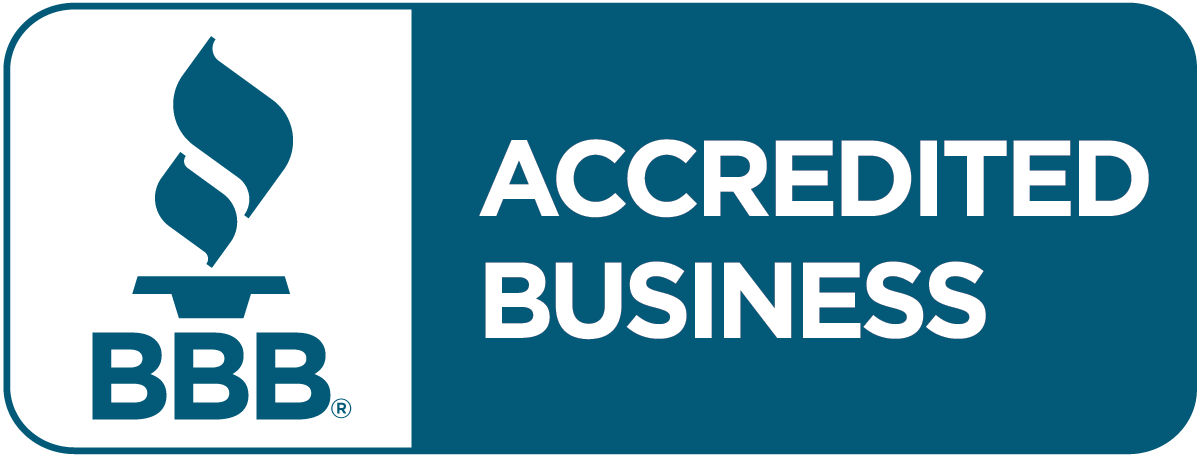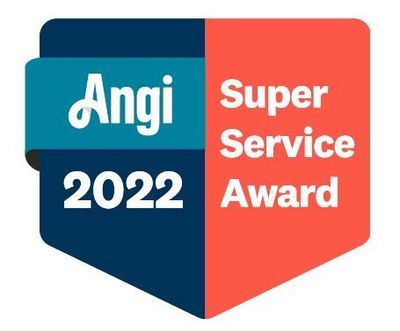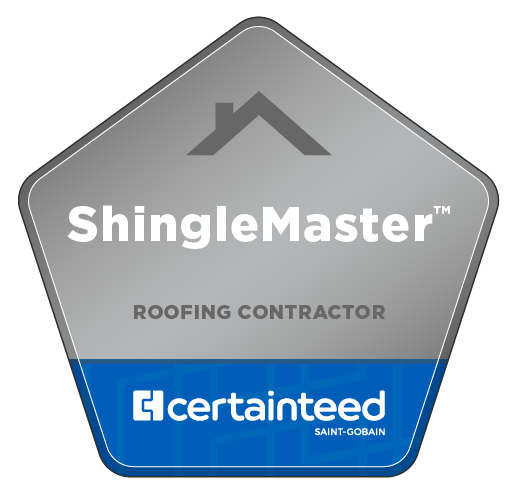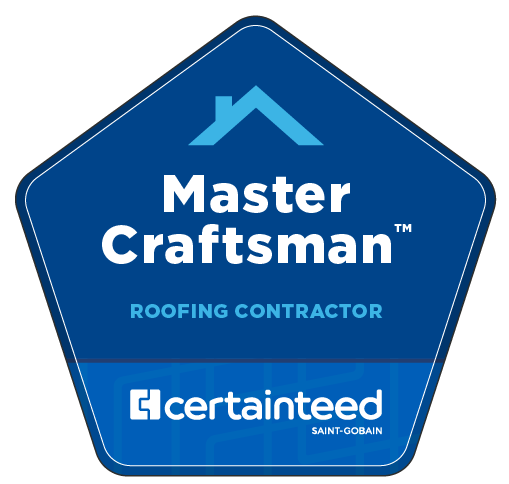8 Common Roof Types
Roof Designs, Shapes & Styles - Work with a local roofing expert!

ROOF TYPES If you’re getting a new roof or building an addition on your home that requires extra roof space, then you may want to familiarize yourself with some of the most common roof designs and how they impact your choice of roofing materials.
Roof Designs, Shapes & Styles
Depending on a home’s architecture, a roof can potentially make up 40% of the exterior, often playing a big role in its overall look and curb appeal. So, when the time comes to install a new roof, you’ll want to pick roofing materials and shingle colors that work well with the shape and slope of your roof, as well as complement your home’s exterior design.
Understanding the potential performance and design impact of different roof shapes and slopes can help you decide which shingles and roofing materials are best for your home from both a performance and an aesthetic point of view.
Common Roof Types and Styles
Pro Tip: Owens Corning® roofing shingles work on nearly all types of roof designs, provided the roof slope meets the minimum requirements outlined. From three-tab to architectural shingles, Owens Corning® offers various types of roofing shingles in a wide range of colors that complement any roof style and home exterior, and are durable to help protect your home from the elements. You can “try on” different roofing shingles and colors using our Design EyeQ® Visualizer to see which products and colors you like best for your home and roof type.
Roof Slope
The slope of your roof has both a practical and aesthetic function. Water from rain or snow, for example, tends to shed, or run off, quicker on a steep slope roof. The roof’s slope is expressed in a ratio based on the roof’s proportions.
Roofing contractors may use the term 6 in 12 or use a contracted version such as 6:12 or 6/12. What this means is that the roof rises 6 inches vertically for every 12 inches (or 1 foot) horizontally. This can easily be translated for any number. A roof with a 4 in 12 slope will rise four inches vertically and 12 inches horizontally.
From flat grades to steep inclines, your home’s roof slope can help create an interesting silhouette.
As you’re choosing roofing materials, keep in mind that the steeper the slope, the more visible your roof’s surface is from the ground, potentially creating an even greater impact on the exterior design aesthetics of your home.
Most homeowners can leave these calculations to their roofing contractor. However, it’s important to know that the International Residential Code has specific minimum slope requirements for all roof coverings, including asphalt roofing shingles. Your roofing contractor can help you select the right choice for your slope.
Although some roof styles are traditionally built with a certain slope, it’s not a hard and fast rule.
8 Common Roof Types
Gable Roof
Think back to your first crayon drawing of a home. Chances are you drew a gable roof. It’s basically a triangle with the base resting atop the house and the two sides rising to meet the ridge. Slopes can vary drastically on the gable roof from steep chalet-style designs to rooftops with a gentle grade.
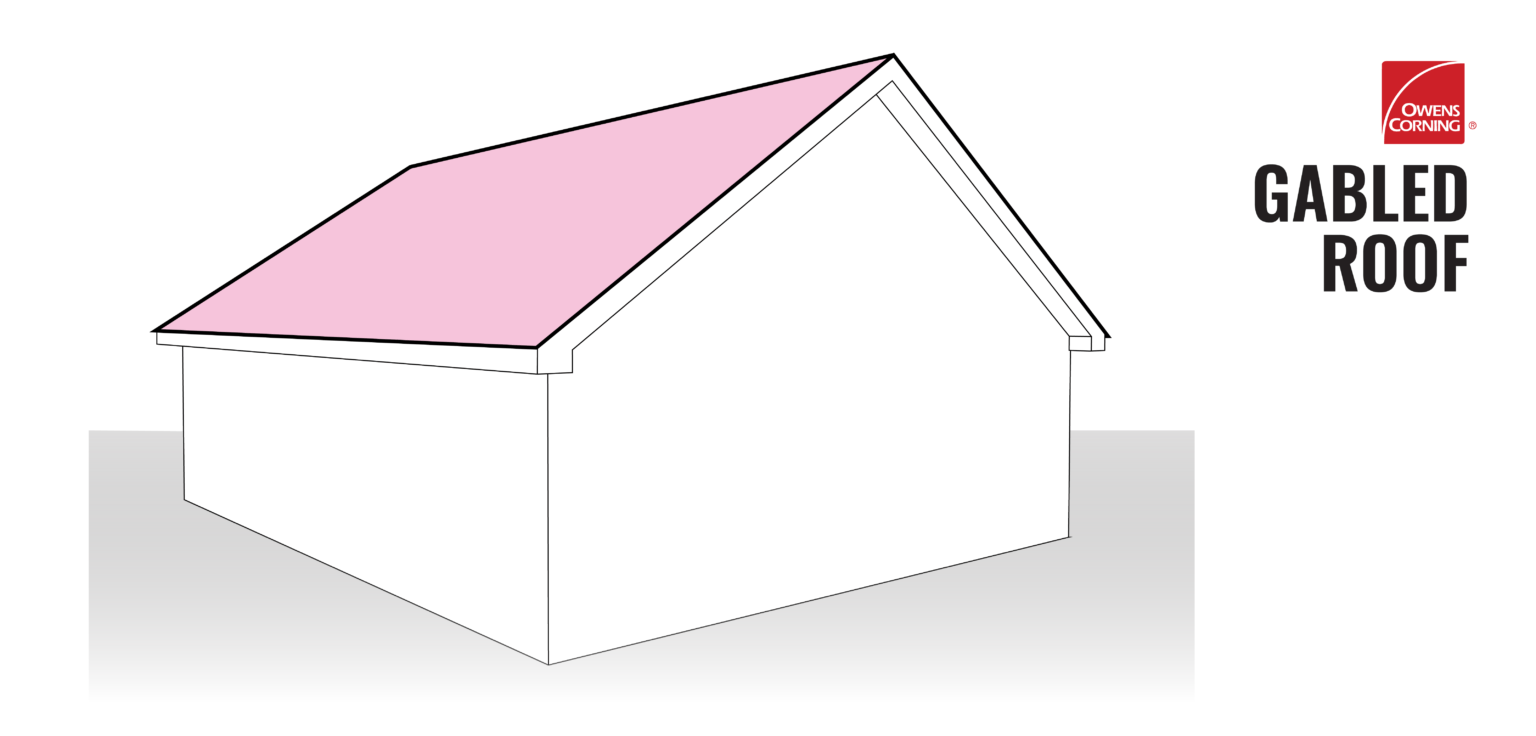
The gable is an extremely popular roof style, and it works well on a variety of home designs. You can fancy it up with front gables over your entryways or go with a crossed gable design that consists of two ridges set at right angles.
Clipped Gable Roof
The clipped gable roof goes by several names, including bullnose. Clipped gable roofs are designed with the basic shape of a gable, with two sides rising to meet a ridge, but then borrow an element from hip roofs: the top peaks are “bent in,” creating small hips at the ends of the roof ridge.
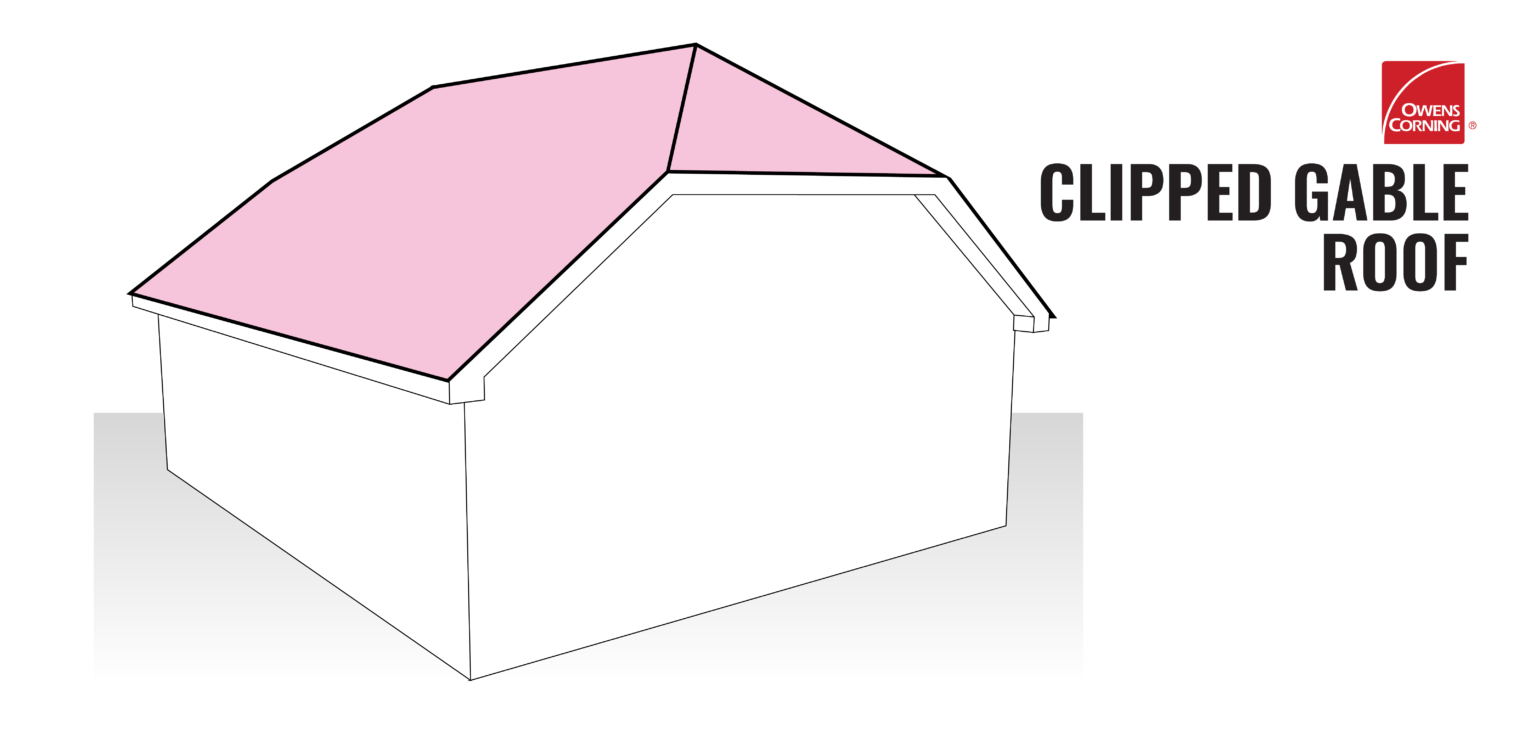
New These hips provide an interesting architectural detail to homes and help showcase high-performance, designer shingles.
Dutch Gable Roof
The Dutch gable roof is another combination style roof that uses design elements of both gable and hip roofs. A miniature gable roof, or “gablet”, is perched atop a traditional hip roof.
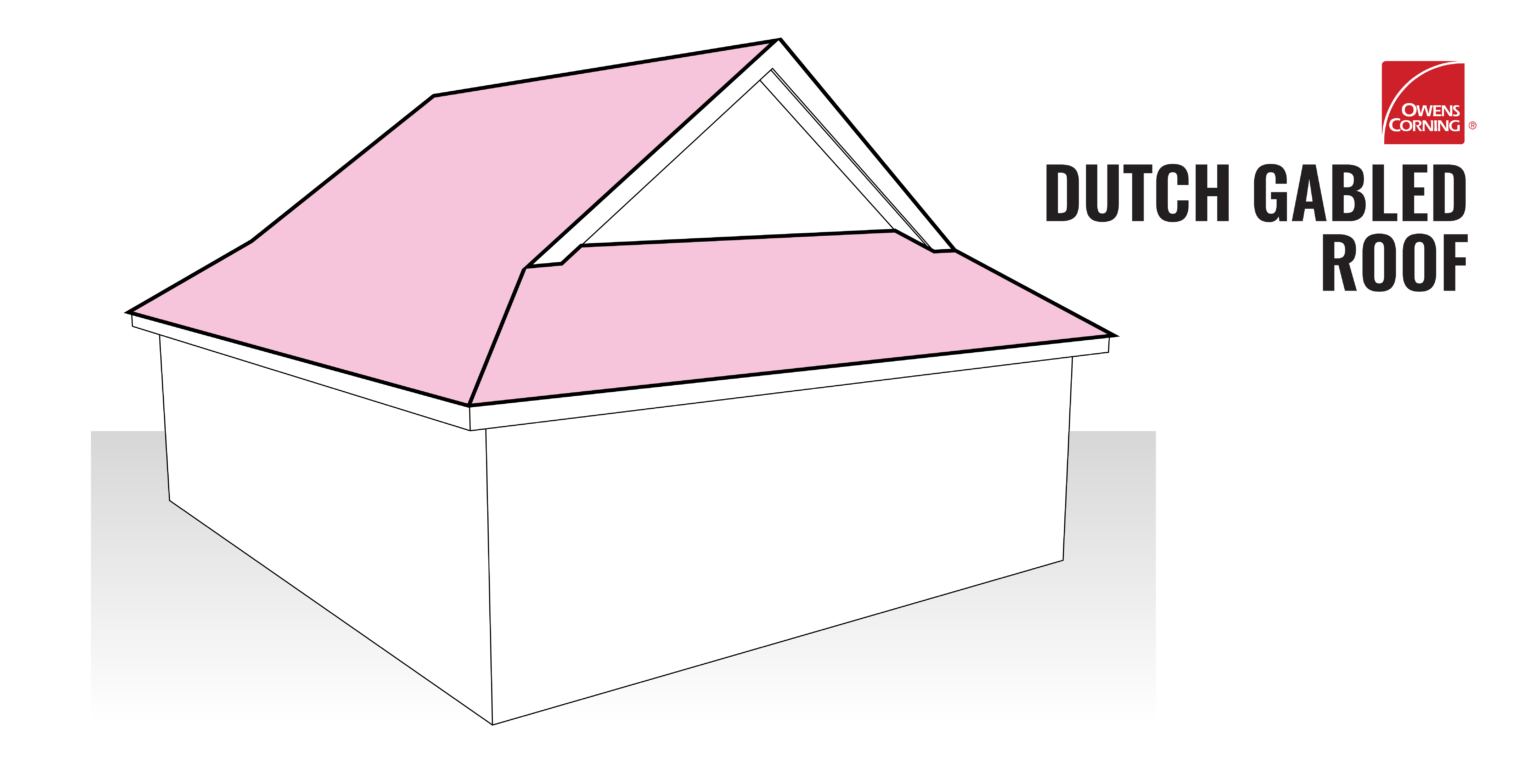
The gable portion provides homeowners with increased attic space and can even be fitted with windows for added sunlight.
Gambrel Roof
Picture a classic red barn with white trim, and you’ve just envisioned a gambrel roof. Its two sides have two slopes each, one steep and one gentle. The design permits the use of the upper floor either as an attic room or loft. Adding windows to the sides of the gambrel roof can bring natural light in and increase the use of the upper story.
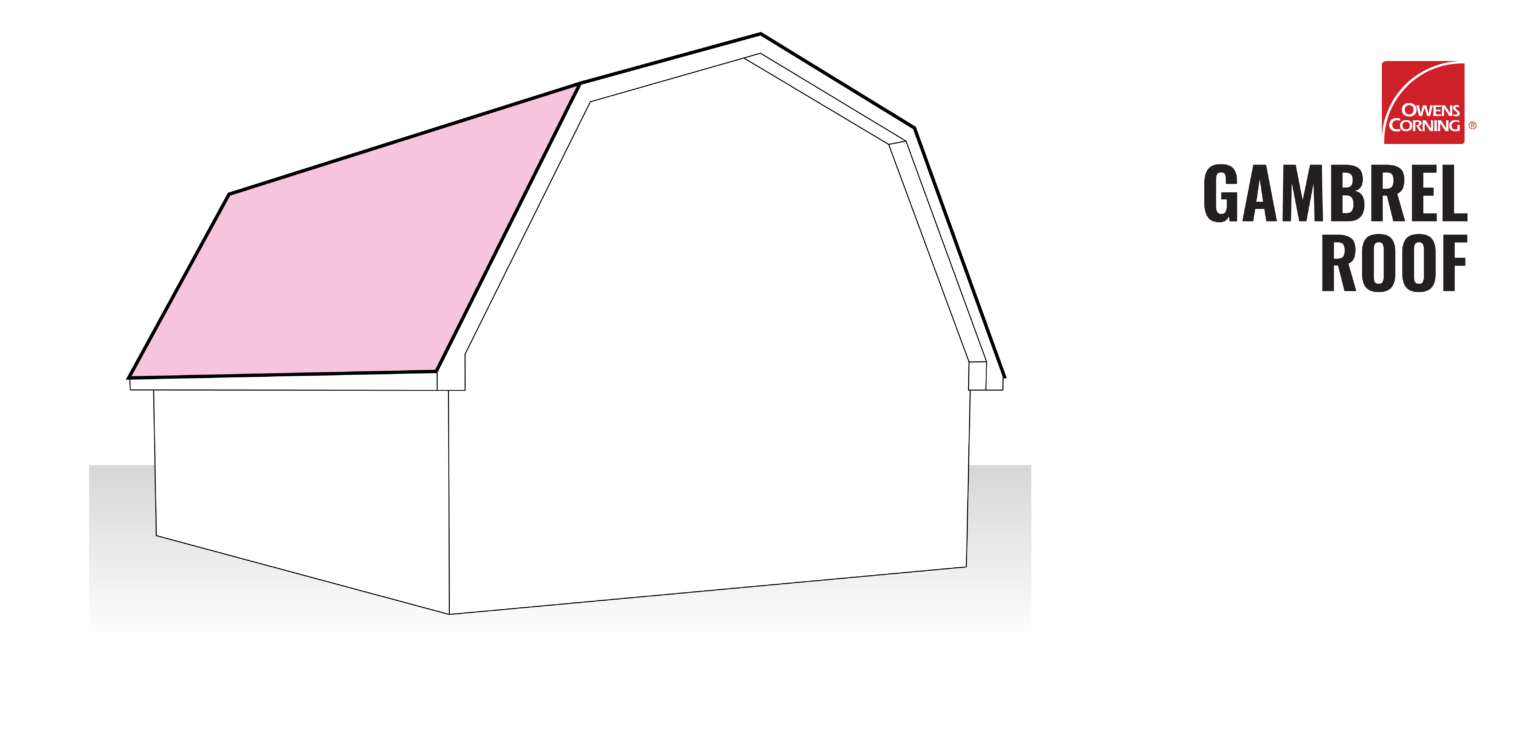
The steep sections of gambrel roofs are very visible, so homeowners should carefully consider the appearance of their roofing shingles.
Hip Roof
A traditional hip roof consists of four equal-length slopes that meet to form a simple ridge. There are variations, though, such as a half-hip that features two shorter sides with eaves.
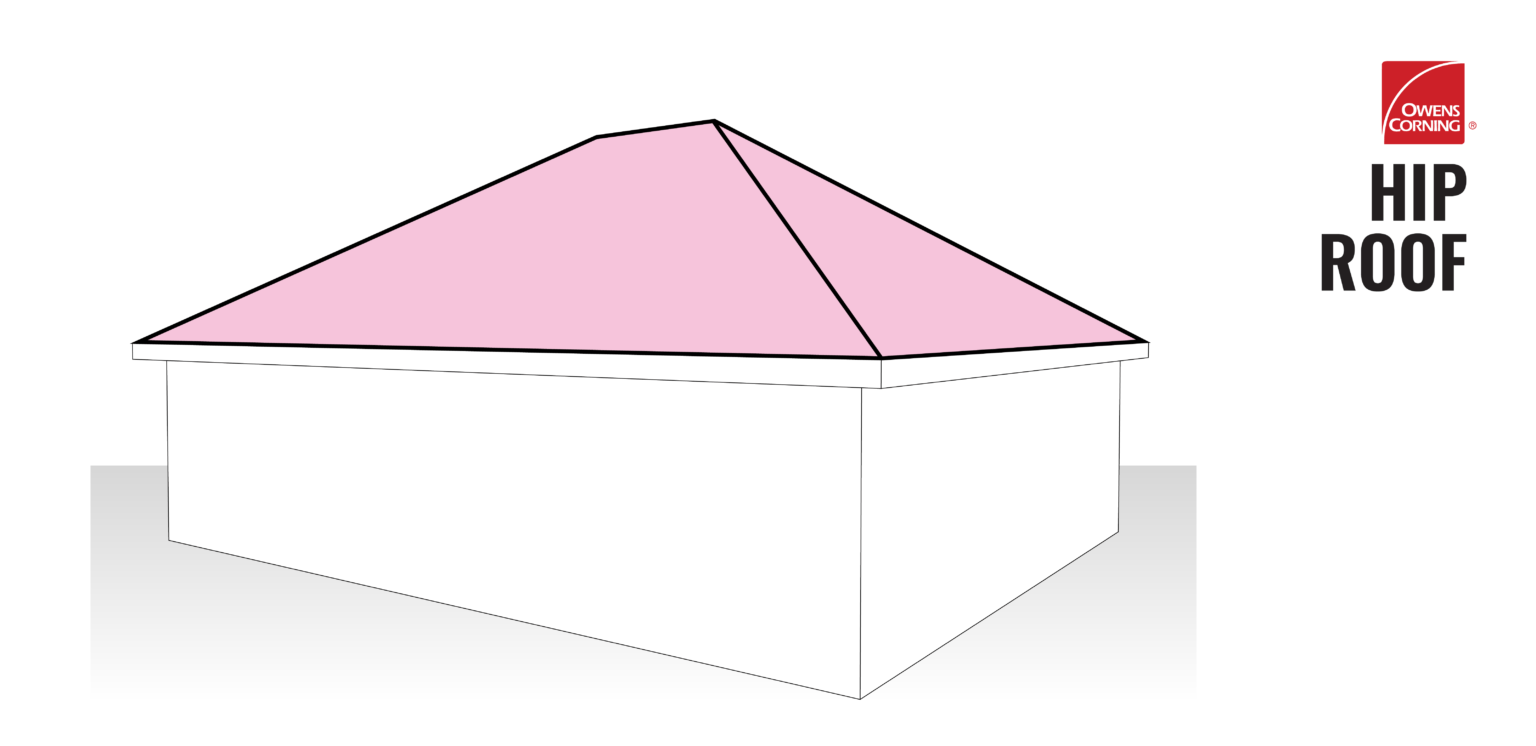
If you have a hip roof, then you may have already realized that most of the roof is visible when looking at your house. The type and color of roofing shingles you get installed on a hip roof will make up a big piece of your home’s overall exterior look because it is so highly visible.
Mansard Roof
The Louvre Museum in Paris is an excellent example of the mansard roof, which takes its classic shape from French architecture. This four-sided design with double slopes has very steep lower slopes, which can be flat or curved.
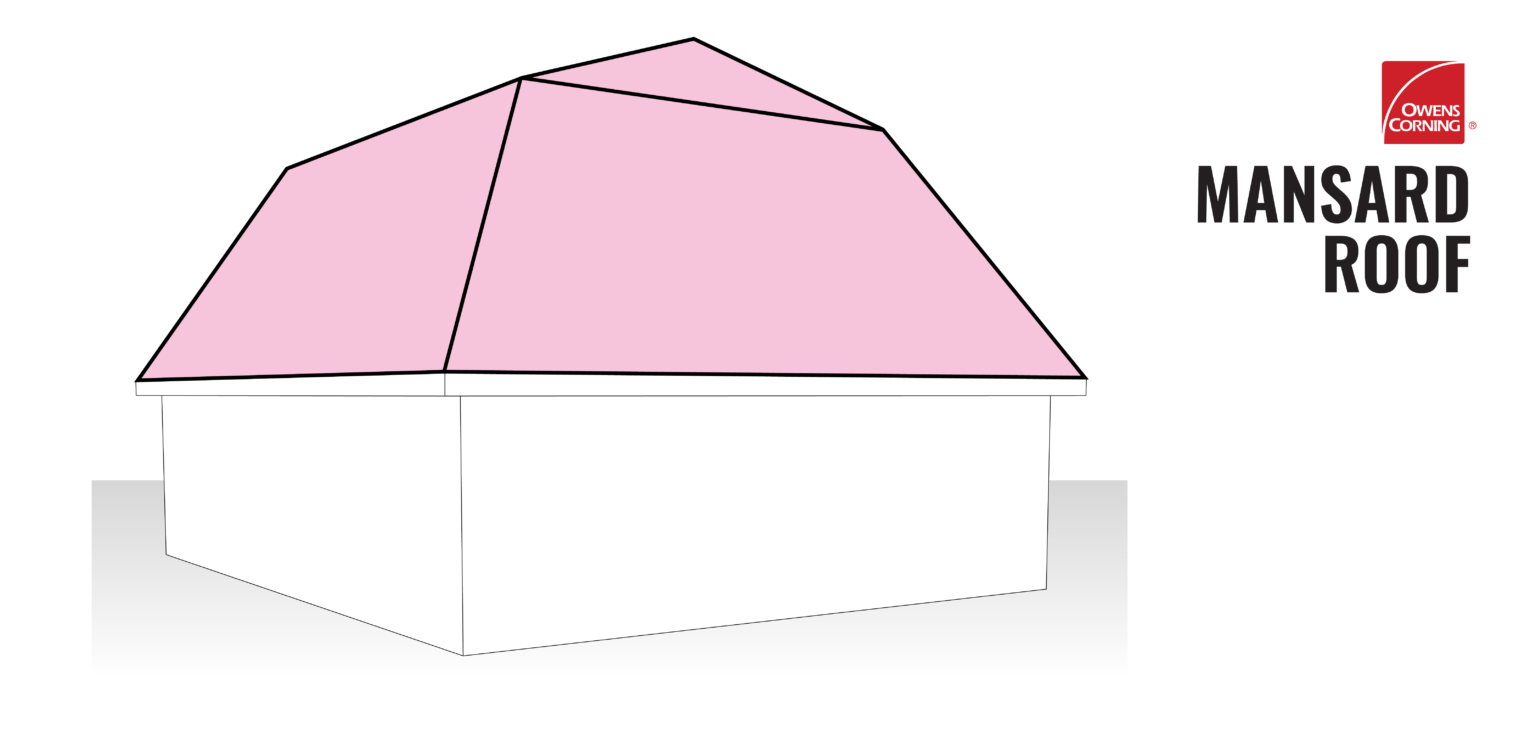
Although the mansard roof originated in France, it quickly became popular in the United States. The style lets homeowners make full use of the upper story with an abundance of interior attic space and multiple windows, and it looks especially appealing when dormers are added.Pro Tip: Opting for architectural shingles in a slate-like shape, like Owens Corning® Berkshire® shingles, can enhance this roof design’s old-world aesthetic even more.
Shed Roof
If you favor modern home designs, you’ll likely appreciate a shed roof. This “lean-to” style resembles half of a traditional gable. While it’s long been used for porches and additions, the shed roof now graces the entire structure on ultra-modern builds. Most shed roofs tend to have lower slopes, with 4 in 12 and below most common, although steeper slopes will speed up water runoff.
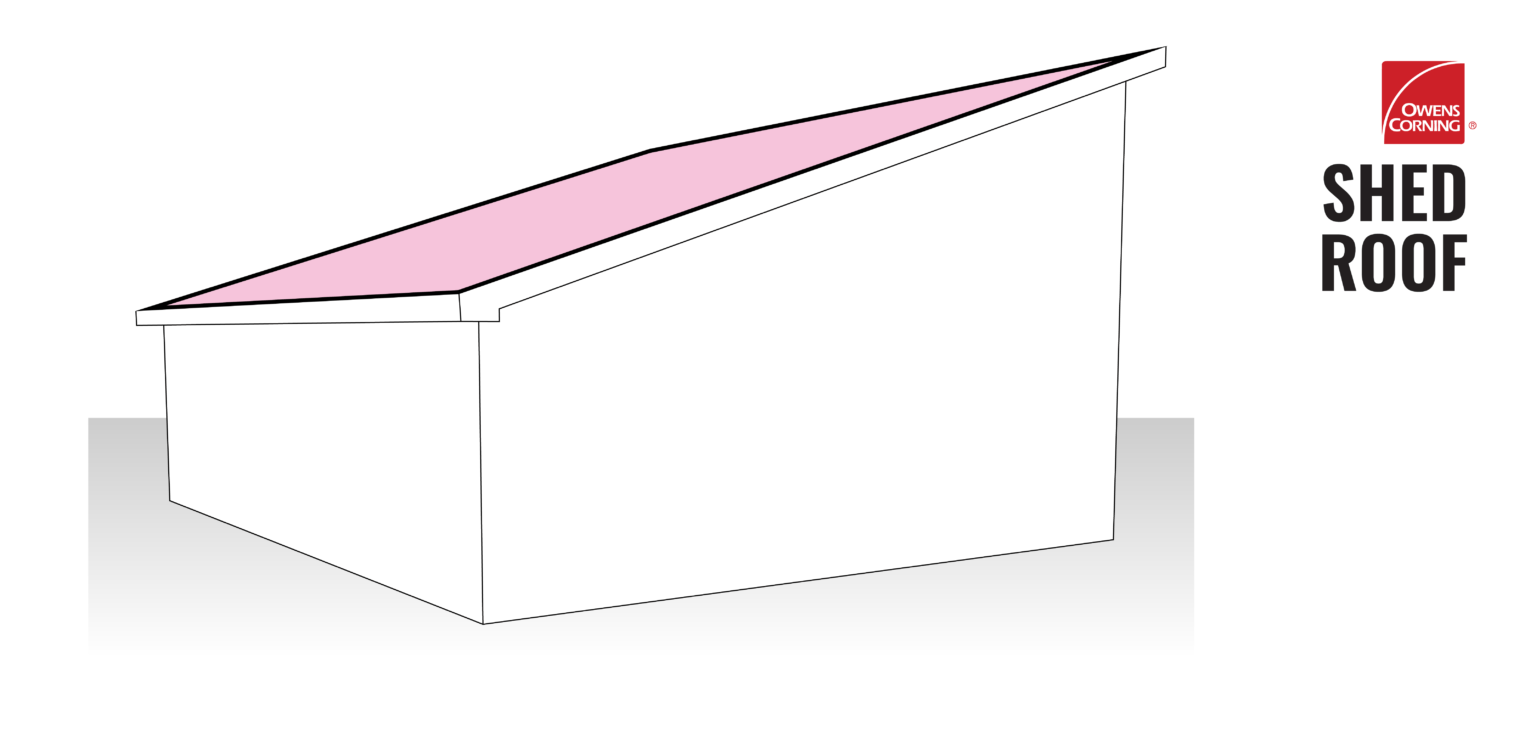
Homes with shed roofs tend to be unique structures that reflect their owners’ style and personality. Shed roofs allow for some interesting window placement opportunities, from small rows of glass panes directly beneath the roof to large picture windows across the front of the house.
Flat Roof (Low Slope Roof)
When most people think of flat roofs, strip malls and industrial complexes often come to mind. However, during the period between 1945 and 1970, many mid-century modern architects experimented with flat rooflines creating dream homes for movie stars and wealthy businessmen. Flat roofs matched the look of the period, blending with the environment and providing large open floor plans. Some homes feature a limited flat surface area with the rest of the roof having a gable or hip design. Additionally, some home additions may use a flat roof to provide extra second floor living space.
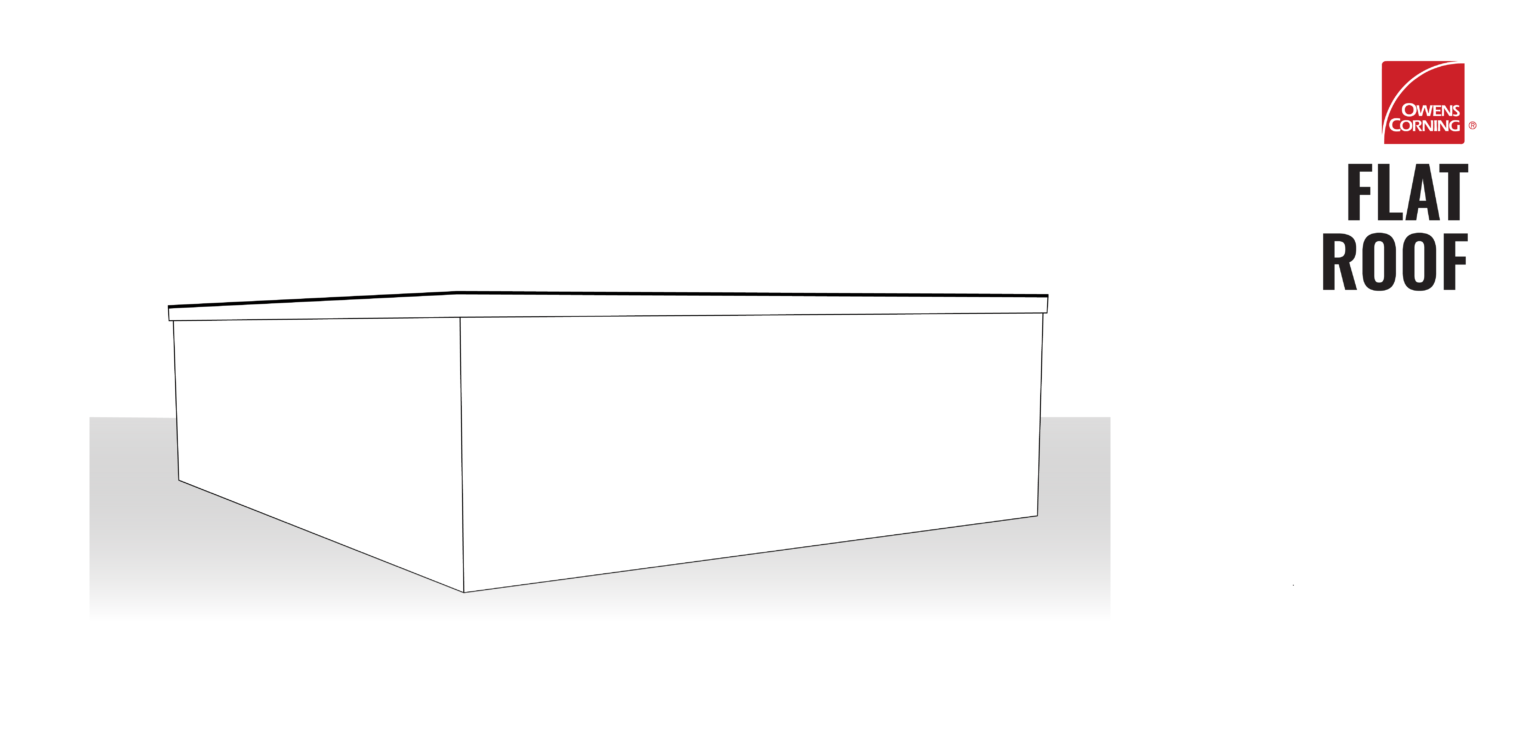
Keep in mind flat doesn’t really mean flat —there needs to be some incline to allow for water drainage.Pro Tip: Flat roofs (low-slope) are particularly vulnerable to leaks, so they must be thoroughly waterproofed and topped with an appropriate material, such as a self-adhered, multi-ply, SBS modified bitumen membrane system, a PVC, TPO or rubber membrane.
How to Choose Roofing Shingles for Your Type of Roof Style?
We’ve given you a breakdown of common roof shapes, which also have a variety of sub-types that can be joined together in combination styles. Making the right shingle selection is up to you.Drive through neighborhoods, browse houses online, and look through magazines to find a roof style and color that reflects your dream house.
Consider your neighborhood. You’ll have the choice to blend into your surroundings or stand out — it depends on your personality and exterior design goals.
Additionally, there may be building codes or HOA restrictions that limit your options, so be sure to do your research before starting any project.
Owens Corning® roofing shingles can be used on all roof types, with limited exceptions to certain roof slopes. Use roof color and design tools from Owens Corning to see what your roof could look like in a variety of shingle styles and colors and help you coordinate the roof with your home’s exterior.
For all of your roof replacement needs in Columbus, Ohio, call us for a free estimate! We will help you choose the best roofing shingles for your home!
Source:
Owens Corning
Contact Ohio Exteriors Today for Your Home Renovation Needs
If you want top-quality products and uncompromising customer service, make Ohio Exteriors your trusted Columbus contractor today. Call us at
(614) 683-2267 or submit our online request form for more information.

